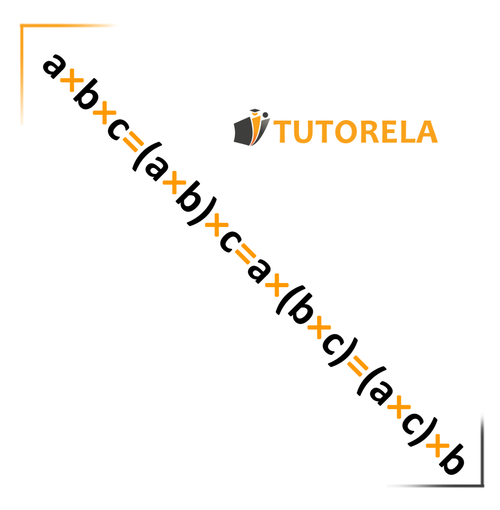The associative property of multiplication allows us to multiply two factors and then multiply the product by the third factor, even if they're not in order from left to right.

We can use this property in three ways:
1. We start by multiplying the first and the second factors, solving, and then multiplying the third factor by the result.
2. We start by multiplying the second and the third factors, solving, and then multiplying the first factor by the result.
- We start by multiplying the first and the third factors, solving, and then multiplying the second factor by the result.
We will place in parentheses around the factors that we want to group first in order to give them priority in the order of operations.
Note: The associative property of multiplication also works in algebraic expressions, but not in division expressions.
Let's define the associative property of multiplication as: